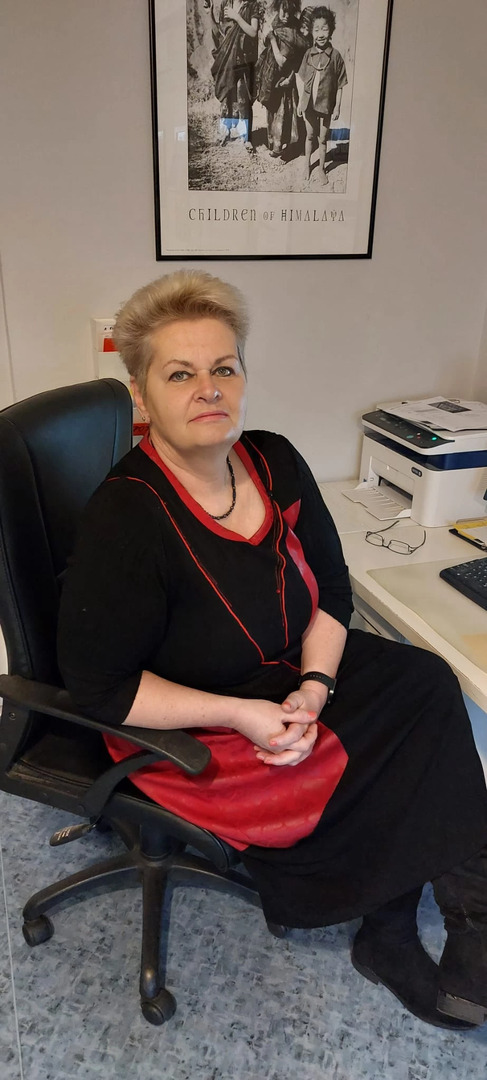Instead of NSAIDs, consider combining paracetamol with a weak opioid
Chronic non-cancer pain is a problem that primary care physicians encounter on a daily basis. In the following interview with general practitioner MUDr. Michaela Wichová, we discuss how to approach a patient who complains of pain, what to remember during examination, and which analgesics are appropriate to start treatment.

What type of chronic pain do you most frequently deal with in your practice?
The majority of patients come in with vertebrogenic algic syndrome and pain in the weight-bearing joints. These are also the diagnoses for which we most often prescribe analgesics.
What are the main principles of analgesic treatment and which drugs do you prefer?
First, it is necessary to look into the patient's medical record to see if any specialists have already prescribed analgesic treatment. Many patients with back or joint pain are under the care of orthopedists and are using non-steroidal anti-inflammatory drugs, which may not be effective for them, so they seek other solutions. They also often use over-the-counter analgesics such as ibuprofen or paracetamol, with varying levels of effectiveness. It is important to ask the patient in detail about the effectiveness of previous analgesic treatments, any comorbidities, and potential allergies. When choosing an appropriate medication, I also consider the intensity of the pain. As a first-line treatment, I prescribe paracetamol at a dose of 1 g; if there is insufficient pain relief, I prescribe tramadol or a combination of tramadol with paracetamol.
What are the rules and limitations for long-term use of non-steroidal anti-inflammatory drugs?
Due to potential side effects, their use is recommended only for a few days. There are also patients for whom this group of drugs is completely contraindicated. Tramadol is safer in this respect, so I prescribe it as an alternative to non-steroidal anti-inflammatory drugs. Most patients tolerate it well.
How do you dose and titrate tramadol?
We start with a dose of 50 mg, which the patient can take 4 (up to a maximum of 6) times a day. The maximum recommended daily dose of tramadol is 400 mg.
In the fixed combination of tramadol 37.5 mg + paracetamol 325 mg, the advantage is that the dose of tramadol can be lower than when used as monotherapy. The lower dose of tramadol in this fixed combination with paracetamol reduces the risk of side effects while maintaining analgesic efficiency. The patient can take up to 8 tablets of this preparation per day according to the SPC, although the usual starting dose is 3 times 1 tablet, with subsequent titration of the treatment. The medication can be used long-term.
How do you evaluate the effectiveness of treatment and when do you adjust it?
Personal contact with the patient is most important to me, during which we propose an individual analgesic plan and evaluate the effectiveness of the treatment during follow-up visits.
What if the combination of opioid and non-opioid oral analgesics is not enough?
It depends on the type of pain. For vertebrogenic algic syndrome, infusions can be applied; joint effusion can be treated with puncture; osteoarthritis can be managed with intra-articular analgesic injections. Close cooperation with orthopedists is essential here. For patients who do not adequately respond to the combination of paracetamol with tramadol, options like buprenorphine can be offered. In cases of severe or breakthrough pain and where treatment is unsuccessful, I refer the patient to a specialized pain management center.
Which patients require a distinctly specific approach?
Pain treatment is always approached individually. We consider not just the type and intensity of pain but also the patient's preferences, their ability to understand the proposed treatment, and their willingness to participate in it. It is important to identify the cause of the pain and not just treat the symptom. There are also types of pain best managed by other specialties, such as pain from leg ulcers or neuropathic pain. In the treatment plan, it is necessary to coordinate with colleagues.
Do you encounter any obstacles from patients?
It happens that a patient comes from a specialist and is using something like nimesulide, which is not effective, and the patient does not even know the name of the drug. Fortunately, we have medical records to refer to. Among older people, I also encounter drug intolerances or duplications, which need to be carefully investigated.
Do you have any practical tips you would like to share with others?
I would just like to reiterate the importance of personal communication with the patient and finding the cause of their pain. It's crucial to physically examine the patient; for example, you can't detect knee effusion if the patient is wearing pants. It is not enough to simply acknowledge that the patient is in pain and immediately prescribe an analgesic.
MUDr. Andrea Skálová
Editorial team of proLékaře.cz
Did you like this article? Would you like to comment on it? Write to us. We are interested in your opinion. We will not publish it, but we will gladly answer you.
